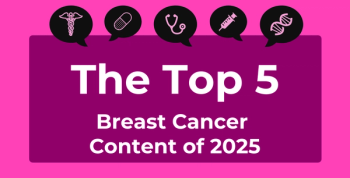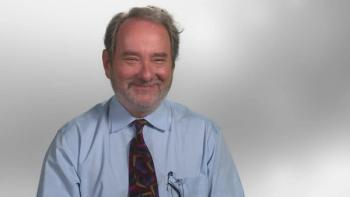
Keys to Achieving Equity in Lung Cancer Screening Include Erasing Stigma, Tackling Systemic Barriers
Increasing lung cancer screening uptake without tailoring outreach and follow-up for underserved populations risks magnifying the existing racial and ethnic disparities in screening, so thoughtful approaches are needed to close the gaps, according to speakers at the CHEST Annual Meeting 2023.
It’s a cruel irony that low-dose CT scans for lung cancer are the most effective cancer screening exam, surpassing mammograms, colonoscopies, and Pap smears, but only 5% of eligible individuals have been screened, with racial and ethnic minority groups even less likely to receive screening. The causes of this disparity are complex, according to panelists at the
The interactive discussion, “Achieving Health Equity in Lung Cancer Screening,” began with Stella Ogake, MD, of The Ohio State University Wexner Medical Center, presenting the dismal statistics: The 5% screening rate among all Americans eligible for lung cancer screening dwindles to 2% in Black individuals and 0.7% in Hispanic individuals. Asked about the barriers to screening, the audience offered answers including the fear and shame of lung cancer associated with smoking, the cultural narrative that lung cancer is a death sentence, and the logistical and financial challenges of arranging transportation and time off from hourly jobs.
Ogake agreed, showing a graphic of a triangle composed of the 3 categories of barriers: capability, motivation, and opportunity.1 Examples of interventions included offering mobile screening to address the opportunity barrier of traveling to screening or explaining the benefits of the CT scan to address the capability barrier of low awareness of the need for screening.
“Having said all of that, all of these strategies to improve lung cancer screening remain unproven, so we don’t have evidence…but we just have to keep trying,” she said.
One recent effort that is based on evidence is the change to the US Preventive Services Task Force (USPSTF) lung cancer screening guidelines to capture more individuals previously left out, doubling eligibility and hopefully increasing the proportion of Black and Hispanic individuals. Its eligibility criteria are simply based on age and smoking history, however, making it simple to implement but leaving out the important context of known risk factors for lung cancer development, including body mass index and race/ethnicity. In contrast, the PLCOm2012 risk assessment model uses 11 predictors including race/ethnicity and was shown to detect 36 more lung cancers than the USPSTF approach in a cohort of 4540 participants.2 This promising tool “captures more people who are at a higher risk of getting lung cancer,” including racial and ethnic minorities, Ogake highlighted.
The next panelist, Matthew Triplette, MD, MPH, of University of Washington School of Medicine and Fred Hutchinson Cancer Center, agreed that the field is still in a “data-free zone” on how to improve lung cancer screening uptake. A key but underrecognized factor is the stigma surrounding lung cancer and the language used to discuss screening. For instance, patients may be alarmed by just the word "cancer" in the phrase "lung cancer screening," which is absent in other common tests like mammograms and Pap smears. Also, an audience member noted, the word “smoker” itself is still ubiquitous even though it disregards the principles of person-first language. In that way, Triplette agreed, individual clinicians have the power to change how they frame the screening conversation with patients to candidly discuss the risks and benefits and allow for shared decision-making.
Among the tools that can be adapted to encourage equity in screening, the audience endorsed the importance of having a coordinator or nurse navigator whom the patient trusts. Triplette noted that although coordinators are helpful, their work is time intensive and can be hard for some health systems to swallow financially, especially since their efforts may bring in an underinsured population of patients.
Above all, Triplette reinforced that the screening strategies are “all valuable, but if you’re using that health equity lens, think about how to tailor them. For example, the electronic tools, sure, you can identify eligible individuals, but is that going to be differential in bringing in this disparities population? Can you use that tool to then do prospective outreach to people that you’ve identified as eligible?... Just thinking about tailoring any approach, if you just increase your uptake, you’re going to magnify the disparities. With every approach you have, really apply that equity lens.”
After these discussions on how to make the screening pipeline more equitable, Francesca Duncan, MD, MS, of Indiana University School of Medicine, took to the podium to address the need for care and follow-up after the initial screening. Components include taking the next steps on any suspicious findings, supporting patients in tobacco cessation, and encouraging annual follow-up to screening, but she highlighted the many studies showing disparities in stage-based treatment by social determinants of health.
For example, some research has found that Black patients are less likely to want surgery for cancer.3 But Duncan cautioned, “I don’t want us to fall into that trap where we are having our own implicit bias saying, ‘Well, I may not call about surgery with Black patients because they’re more likely to not want it,’ but maybe instead just use this as, ‘What can I do as far as to improve that shared decision-making with my Black patients and make sure that when I’m talking with them about surgery, I’m answering all questions that they may or may not have and helping them make an educated decision?’”
Asked for their opinions on the barriers to follow-up, audience members noted the self-blame surrounding smoking, as well as the discordance between USPSTF guidelines and Medicare payment, which stops covering lung cancer screening at age 78 years. Lack of time in primary care appointments to address screening is also an issue, so Duncan recommended working on a unified script that physicians will feel comfortable discussing.
“We need to identify barriers to lung cancer screening and mitigate those with patients, so not trying to tackle all 10 barriers or 20 barriers, but pick 1 and try and see if you can alleviate that for your patient,” Duncan said, “and that could start with you just being kind, considerate, and coming to them as someone who's not a smoker, but someone who has a history of smoking.”
References
1. Wait S, Alvarez-Rosete A, Osama T, et al. Implementing lung cancer screening in Europe: taking a systems approach. JTO Clin Res Rep. 2022;3(5):100329. doi:10.1016/j.jtocrr.2022.100329
2. Tammemägi MC, Ruparel M, Tremblay A, et al. USPSTF2013 versus PLCOm2012 lung cancer screening eligibility criteria (International Lung Screening Trial): interim analysis of a prospective cohort study. Lancet Oncol. 2022;23(1):138-148. doi:10.1016/S1470-2045(21)00590-8
3. Hu X, Ye H, Yan W, Sun Y. Factors associated with patient’s refusal of recommended cancer surgery: based on Surveillance, Epidemiology, and End Results. Front Public Health. 2022;9:785602. doi:10.3389/fpubh.2021.785602
Newsletter
Stay ahead of policy, cost, and value—subscribe to AJMC for expert insights at the intersection of clinical care and health economics.









































